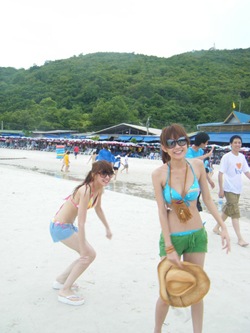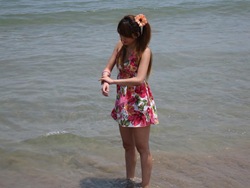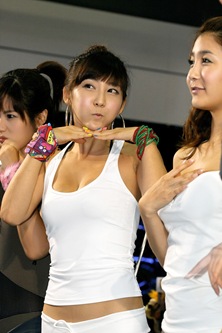Cambodia’s Best-Known Literature/Culture Hero
by Lay Vicheka
“
Choun Nat” is known as the most impressive literature and cultural promoter that Cambodia every produced. Many claim Choun Nat revitalized Cambodian cultural identity. Sadly he is not world-widely recognized as those in the developed countries, due to Cambodia’s immense isolation and misery over the past decades. The purpose of this scope of paper is to awaken the Cambodians and foreigners alike, not to ignore our remarkable role model.
I. Life
Choun Nat was born in the eleventh of March 1883 in Kampong Speu province (Kampong Speu is located in North of Phnom Penh, the capital of Cambodia, about 48 kilometres). He was from agrarian family. His mother’s name was Youk and father’s name was Prom Choun. Choun Nat had only one brother who was Sir. Choun Nut.
Reaching the age of twelve, his parents took him to one Buddhist monastery named Pothiprek, located in Kandal Provice (Kandal Provinnce is located in the south of Phnom Penh, the capital of Cambodia, about 10 kilometres) so that he could be instructed Khmer literature by Keo Morm. When he turned 14 (1897), he became Buddhist monk and took studies in Pothiprek monastery for two years. Then he left for Hounaloum monastery, located in Phnom Penh, close to Royal Palace. Over there, he stayed with master Tep Sao. But he returned to Pothiprek monastery when he was 21.
Choun Nat tirelessly struggled in studying Pali and other languages, especially French. Students in his generation stated that Choun Nat was always the front-runner of all other students and always progressed. Seriousness in every subject he mastered, Choun Nat insightfully understand the grammar of every language; Sanskrit, Khmer literature (Khmer and Cambodia is used correspondently). Not only grammar, Choun Nat impressively remembered the deep words related to ancient culture. Choun Nat is able to communicate in Thai, Lao, French, Vietnam, and English. He was excellent and unrivalled among the students of his generation in Pali language. In 1913, he contested on “chasing sentence” in front of king Sisowat, and Choun Nat could chase for four sentences, which was the highest in that era. 1915, Choun Nat ranked number two in the national contest, and was appointed Advanced-Pali language-Professor in Soramrith High School (Soramrith is the father of King Norodom Sihanouk).
Choun Nat had deep understanding of Pali language, he could read or pronounce in accordance to Siri Lanka’s, Burna’s, Mon Khmer’s, Siam’s, and Laos’s accent. 1922 and 1923, he went to studied Sanskrit and archaeology in Hanoi, North Vietnam.
II. Personality
Choun Nat treated everything seriously, from he was young to the age of 86. He sometimes worked the whole night without sleeping. Choun Nat slept only about four to five hours only a day. It was his faculty to tirelessly and continuously work.
Choun Nat was considered highly intellectual, especially in term of quick/focus response and decision. His praying contained the advisory connotations in both holy and unholy knowledge. Most of his praying aimed to instruct everyone the value of industriousness, unity, religion, peace, and the routes to the prosperous future for the laymen. In every praying he did, Choun Nat aimed to insert patriotism into people’s hearts.
Choun Nat had entrepreneurial and leadership spirit, as he could vigorously go everywhere to and understand every situation he attended.
Choun Nat had the personality of “helper”. In every activity he did, Choun Nat aimed to bring prosperity in the present time as well as to the future. These humanitarian activities were called “the intellectual deeds”. Choun Nat had contributed to helping the country since 1920. He bought three hectares of land surrounding the monastery to enlarge the monastery, donate to construct roads, establish concrete vice-Pali shrine, constructed one small and one big bridge, financially support from the low-grade schools to the universities, bought a hectare of land and made it the ownership of the religion…etc.
III. Daily Activities
Choun Nat only regularized one kind of meal, which was lunch, and breakfast was in regular, sometimes he didn’t have it.
When there was guest, he immediately came to hospitalize though he was being hectic with writing. Choun Nat was absolutely careful in using the time everyday, because he had too much to execute. But if he was really free from work, he warmly hospitalized the guest; explaining the Buddhist philosophy, philosophy for everyday life, which sometimes took 4-5 hours and sometimes for the whole night.
Every day, night and daily, Choun Nat always had work to complete. Choun Nat had the philosophy of “live to work”.
IV. Miracles Before Demise
On 10 September 1969, Choun Nat dreamed about two air- oaring tombs, and those tombs became more and more diminished in size, until it vanished. The image of the dream was positively interpreted. Choun Nat himself, interpreted that his group would achieve their goals.
Another dream happened on the 25 th of September 1969 at 20.00 to 22.00 o’clock. This time, he saw the moon, surrounded by red and blue colour. Choun Nat started to be sick on the 23 rd of September 1969 at 15.45. French doctor, Mr. Mazo claimed that Choun Nat’s disease was not really serious. However, the ministry for health appointed two doctors for Choun Nat.
Choun Nat died at the age of 86
V. Achievements
¡ 1919: Secretary of Khmer Dictionary Consultancy.
¡ 1925: Member of Alphabet Edition Group.
¡ 1926: Invigilator of grade-eight national examination and French-Khmer advanced grade eight in Phnom Penh.
¡ 1927: Nominated to be the member of final-edition-group of Khmer dictionary. Choun Nat was solely responsible to produce dictionary until the first and second episode of the dictionary were published five times. In the same year, Choun Nat was member of final-year-editor group for the Cambodian library, which is now “The Buddhist Centre of Cambodia”.
¡ 1930: Nominated vice-director of Phnom Penh Pali School. He was, in the same year, nominated Buddhist Koran assistant-member of Buddhist Centre, Phnom Penh.
¡ 1932: Nominated member of vocabulary-selector group of the ancient Khmer writers to insert those terminology into Khmer Dictionary.
¡ 1933: Nominated member of the examination group of the books, published by ministry for education.
¡ 1934: Member of edition group to select Khmer vocabulary to compare with French vocabulary, to use in administrative affairs.
¡ 1935: Professor, teaching Pali, Sanskrit, Khmer literature, Laos language of the top grade in Sisowat High School, Phnom Penh.
Besides these, Choun Nat continuously received national modals; medal in 1917, 1932, 1937, 1942, 1944, 1948, 1962, 1963 and finally in 1969.
VI. Social Status
¡ 1942: Nominated director of advanced Pali school, Phnom Penh (this school is now called “Preah Soram Rith Buddhist High School).
¡ 1944: Top director of Hou Naloum monastery.
¡ 1945: Advanced Consultative Group for the monk.
¡ 1947: Vice-committee for culture of the national committee for education.
¡ 1948: Director of the Buddhist-etiquette committee, examining on the books for Buddhist rules of Cambodia.
¡ 1950: Appointed the nation’s top president of the monks in Mahayana vehicle (Buddhism is divided between two vehicles; Mahayana and Theravada).
¡ 1957: Provided the highest status of monk by Burma.
¡ 1961: Director of interview about national literature, to be broadcasted every Friday.
¡ 1963: Norodom Sihanouk appointed him the highest hierarchy of royal monk.
¡ 1964: All the Cambodian writers unanimously appointed him president in writing Khmer literature and distinguished member of Khmer writer association.
¡ 28 May1967: Received Ph. D in national literature from Royal University of Phnom Penh.
¡ 1968: Director of the committee, examining to-be-published Khmer history texts.
¡ 1969: Director of the committee, examining and defining the meanings of Khmer flag.
VII. Obligations Fulfilled Abroad
¡ 1931: Led the delegation of the monk officials to the capital of Laos to participate in the inauguration of the Laos’ Buddhist centre, and to discuss about academics of the vice-Palic school in Laos.
¡ 1933: Led the delegation of Khmer monks to visit all the Khmer pagoda, located in Kampuchea Krom (This territory was once belonged to Cambodia, but the French had transformed it into Vietnamese ownership).
¡ 1939: Led delegation to Laos again. This time was to discuss the affairs of Laos’ Buddhist centre and the academics in the Pali school in Laos, to remind the Laos people to go on the same track as the Buddhist academics in Cambodia.
¡ 1943: Correspondent Member of the French academic centre in the west. 1942: He was appointed distinguished member of this centre.
¡ 1950: Led the delegation to Sri Lanka to establish World Buddhist Association.
¡ 1953: Led the delegation to Burma.
¡ 1954: Led the delegation to the Capital of Burma again.
¡ 1955: Led the delegation to Burma again to finalize the annual meeting.
¡ 1959: Led the delegation to attend Visak Bochea Festival.
And more…
VII. Conclusion
What Choun Nat had done, is beyond the capacity of human kind! A whole of his life was to donate to revitalize the cultural identity of Cambodia. Knowledge about Choun Nat life would be of great model for the next generation; how could Choun Nat delegate the enormous obligations? Anyone ignore Choun Nat would lose great intellectual wealth. Choun Nat’s biography is classified into the cultural heritage of Cambodia, and Cambodia must preserve this cultural heritage.
-----------
Today, when I was on the way to the Pencil Supermarket, I passed the new statue of a famous monk called Choun Nat in Phnom Penh which the government just inaugurated a few weeks ago. I decided to stop by and take few pictures. This statue, which was made of copper and gold, is located in Hun Sen Park and over two meters in height. Choun Nat (1883-1969) was former Buddhism Patriarch or Chief of Cambodian monks. He is known as the most impressive literature and cultural promoter that Cambodia ever produced. He is also known as linguist, poet, and writer.










 The china I will be using this Holiday season! I love it! It's Johnson Brothers "Friendly Village" featuring Winter scenes and I am in such a rush to get started decorating. I was so concerned I wouldn't be up to it..but each day finds me more anxious to get things going! What gets me in such a tizzy to decorate for the Holidays?? :)
The china I will be using this Holiday season! I love it! It's Johnson Brothers "Friendly Village" featuring Winter scenes and I am in such a rush to get started decorating. I was so concerned I wouldn't be up to it..but each day finds me more anxious to get things going! What gets me in such a tizzy to decorate for the Holidays?? :) I found this wonderful African Violet at a garage sale last Saturday for $2.00 and loved it! I thought it was a great buy. even the stems looked real. I have been picking up florals and yard items for pennies.
I found this wonderful African Violet at a garage sale last Saturday for $2.00 and loved it! I thought it was a great buy. even the stems looked real. I have been picking up florals and yard items for pennies. This lovely find was $5.00 but worth every cent! I found this one two weeks ago on my first Saturday out. It's amazing what I will go through to go to garage sales! :)
This lovely find was $5.00 but worth every cent! I found this one two weeks ago on my first Saturday out. It's amazing what I will go through to go to garage sales! :) The pot is VERY heavy (concrete?) and it obviously was a well made silk. LOVE IT!
The pot is VERY heavy (concrete?) and it obviously was a well made silk. LOVE IT!
 What a great day this was! My CT scan came out negitive, NO blockage! NOTHING is wrong with me...I am fine! Getting better every single day.
What a great day this was! My CT scan came out negitive, NO blockage! NOTHING is wrong with me...I am fine! Getting better every single day.

 New York: Basic Books, 2000, 473 pages. Cloth, $35.00.
New York: Basic Books, 2000, 473 pages. Cloth, $35.00.






























































































































































































































































































































